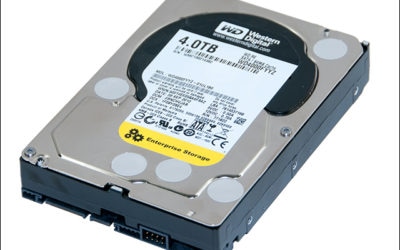
The landscape of data storage on hard disk drives (HDD) has expanded greatly since its introduction in the 1950s. The “spinning disk” varieties typically range from 5,400 – 15,000 RPM and capacities up to 18TB as of September 2020. They also come in Serial ATA (SATA), and Serial Attached SCSI (SAS) varieties, with a nearline SAS (NL-SAS) sort of hybrid.
SAS vs SATA
SAS drives are faster and more reliable, but also more expensive than SATA drives. NL-SAS drives are basically enterprise-class SATA drives with a SAS connector, which offers better access capabilities, throughput, and storage control.
SSD vs Spinning Disks
Is the need for speed the only reason to use SSDs?
Solid-state drives (SSD) emerged as a faster and denser (up to 100TB in the same space as a single 18TB SAS drive) successor to traditional hard drives, but at an exponentially greater cost. One cost offset versus spinning disk drives is that they use less power and generate less heat, which decreases data center/operational costs. For some, the ability to access and serve data and applications exceeds the cost difference of SSDs.
For years now, companies such as VMware have used, or provided for the use of, SSDs or flash technology to reside in a host server and act as a cache for virtual machines, later named vSphere Fast Read Cache (deprecated in vSphere 6.7u2.) They now focus on SSD support for vSAN. Many companies also use SSDs or flash for a global cache, such as Veeam’s WAN Acceleration with deduplication, to provide for extremely fast reads for large amounts of data.
Tiered storage has been a popular solution, utilizing flash or SSDs for the highest-tiered apps and workloads, with slower or lower-tier storage in place for other functions, and the lowest tier often going to backups or archival. Some hardware vendors even put SSDs and spinning drives in the same chassis for an all-in-one tiering solution.
When it comes to lower-tier storage, and especially storage for backups, “cheap and deep” has long been preferred. Certain use cases exist, however, to justify using SSDs for backups, such as the need for the extremely fast completion of incremental backups, which will make their way to cheaper disks over time. Due to the large amount of data companies must protect these days in the same or less time, the nearline SAS is a popular option. Another consideration are instant recovery features of backup software, such as Veeam’s Instant VM Recovery, which uses the storage on which the backup resides to run virtual machines directly from the backup file without needing to restore it first. Faster disks equal better performance.
Fortunately, the general trend in tech is that prices decrease as new products or technologies emerge, but will that be enough to overcome the price difference between SSDs and traditional HDDs? According to Chris Mellor’s report from August of 2019, Aaron Rakers, a Wall Street analyst for Wells Fargo, “thinks enterprise storage buyers will start to prefer SSDs when prices fall to five times or less that of hard disk drives.” As of that time, the cost was roughly 9x the amount.

For cloud providers, the decision is not as simple, given the sheer amount of data and types of data requiring processing and storage. As a customer, you will typically specify latency and capacity requirements for an application or workload, and the cloud provider will put that on any combination of disks and systems to meet your requirements and stay within SLAs. If they can generate the IOPS necessary on spinning disks, they will likely do so.
Tiered storage has been a popular solution, utilizing flash or SSDs for the highest-tiered apps and workloads, with slower or lower-tier storage in place for other functions, and the lowest tier often going to backups or archival. Some hardware vendors even put SSDs and spinning drives in the same chassis for an all-in-one tiering solution.
Inevitably, at some point, the cost differential between SSDs and SAS drives will narrow and users will likely begin phasing out spinning disks for better speed, reliability, and operating costs. As is always the case, however, something newer and faster (and more expensive) is always on the horizon and will create another gap for us to compare.
More Backup Posts:
Why Do Disk Drives Fail
Global Data Vault is inherently interested in data protection and providing disaster recovery solutions for when disk drives fail. Continuing in our series of weighing the differences between enterprise class disk drives and desktop class disk drives, we are now...
Backup Tips – 12 Things You Must Backup
There will come a time in your business life where you either have a computer crash, a large scale network disaster or you have to reinstall an operating system. In any of those dreaded events, you will thank your lucky stars if you have followed these computer backup...
4 Steps to Take BEFORE You Backup Your Data
Backing Up Data It’s one of an IT department’s and computer users worst nightmares: having to reinstall an operating system. You KNOW that it won’t be the same. You’ll lose personalized settings. You’ll spend hours updating drivers. You’ll overwrite files. It will be...
Data Backup vs Data Storage Archives
Online data storage comes in two main flavors: data backup and data storage archive. Which is right for you? What is Data Backup Data backup is a regularly scheduled update of local data to the offsite server. It also provides retention of older versions of the local...



0 Comments